Key Takeaways
-
Identification: Bed bugs are flat, reddish-brown crawlers hiding in mattresses and cracks; fleas are smaller, dark, and jump using strong hind legs, often hiding in pet fur or carpets.
-
Bite Patterns: Bed bug bites form lines or clusters on exposed skin, typically overnight; flea bites appear in random clusters, mainly on ankles, legs, or waist, and itch immediately.
-
Health Risks: Bed bugs cause irritation and anxiety but don’t spread diseases; fleas transmit serious illnesses like murine typhus, tapeworms, and even plague.
-
Prevention Strategies: Use mattress encasements and inspect regularly for bed bugs; for fleas, focus on pet treatments, vacuuming, and yard care.
-
Treatment: Combat bed bugs with steam, vacuums, encasements, and insecticides—call professionals for severe cases; treat fleas by addressing pets, cleaning, and applying indoor/outdoor sprays.
-
Myth-Busting: Clean homes can still get bed bugs; fleas bite humans, not just pets. Bed bugs hide during the day, while fleas live mostly on pets.
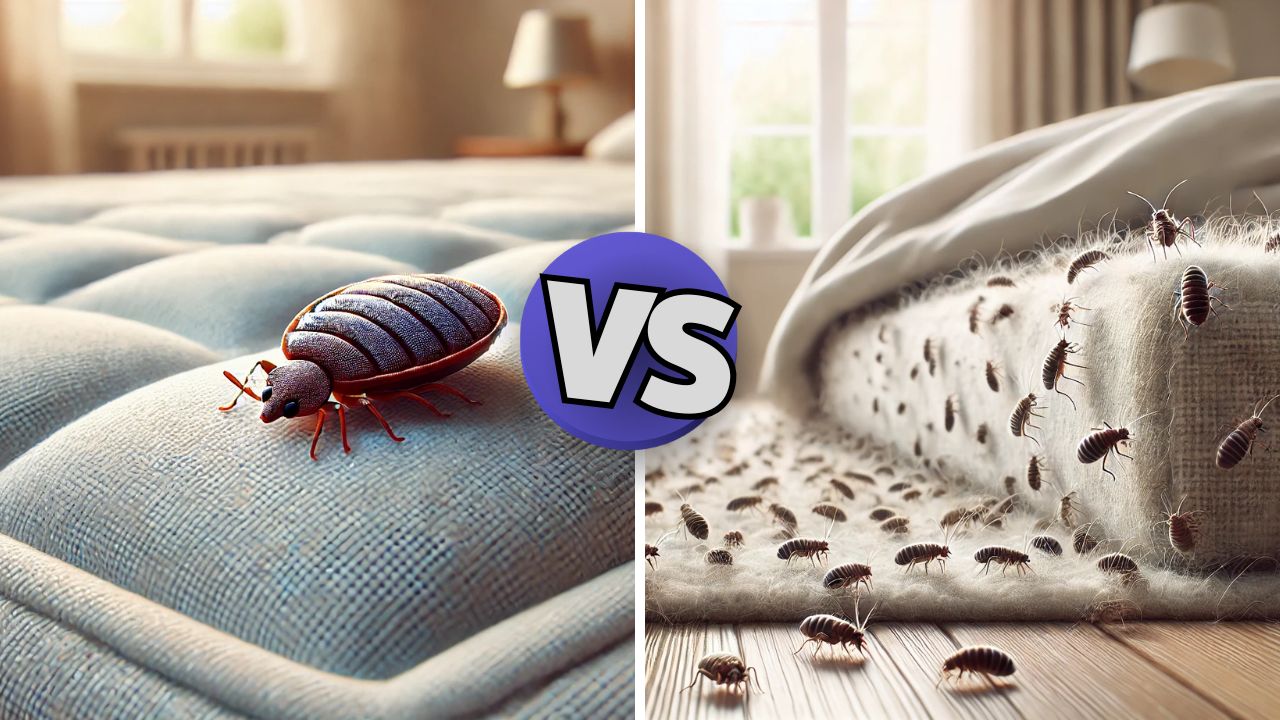 You wake up with itchy red spots on your arm. Your dog’s been scratching all night. The thought creeps in—is it fleas? Or bed bugs? And you know what? That’s not a question to ignore.
Bed bugs and fleas are two tiny and one of the most common blood-feeding pests that cause discomfort in homes. They bring big problems and the wrong diagnosis means wasted time, the wrong treatment, and more bites tomorrow. While both can infest living spaces and bite humans, they have distinct differences in their appearance, behavior, and impact on health. Understanding these differences is crucial for effective pest control.
This guide will help you distinguish between bed bugs and fleas, covering their physical traits, behavior, health risks, and prevention methods.
If you’re noticing itchy bites and aren’t sure what’s causing them, our experts can help with a free pest inspection visit. Schedule your free inspection today and regain peace of mind.
You wake up with itchy red spots on your arm. Your dog’s been scratching all night. The thought creeps in—is it fleas? Or bed bugs? And you know what? That’s not a question to ignore.
Bed bugs and fleas are two tiny and one of the most common blood-feeding pests that cause discomfort in homes. They bring big problems and the wrong diagnosis means wasted time, the wrong treatment, and more bites tomorrow. While both can infest living spaces and bite humans, they have distinct differences in their appearance, behavior, and impact on health. Understanding these differences is crucial for effective pest control.
This guide will help you distinguish between bed bugs and fleas, covering their physical traits, behavior, health risks, and prevention methods.
If you’re noticing itchy bites and aren’t sure what’s causing them, our experts can help with a free pest inspection visit. Schedule your free inspection today and regain peace of mind.


Not getting a solution?
Get your free pest control estimate today!What Are Bed Bugs?
Bed bugs are larger than fleas but are small, reddish-brown, flat shaped insects that primarily feed on human blood. They are known for their ability to hide in furniture, bedding, and cracks in walls but you can spot them with the naked eye, Though bed bug bites can cause irritation, they do not transmit diseases.Physical Characteristics of Bed Bugs
-
Size: 1/4 to 3/8 inch long, about the size of an apple seed.
-
Shape: Flat, oval body with no wings.
-
Color: Reddish-brown, becoming darker after feeding.
-
Distinguishing Features: Broad, flat body allows them to hide in tight spaces.
 Bed bugs are nocturnal pests that emerge at night to feed on their hosts. They prefer warm environments and typically infest beds, furniture, and wall crevices.
Bed bugs are nocturnal pests that emerge at night to feed on their hosts. They prefer warm environments and typically infest beds, furniture, and wall crevices.
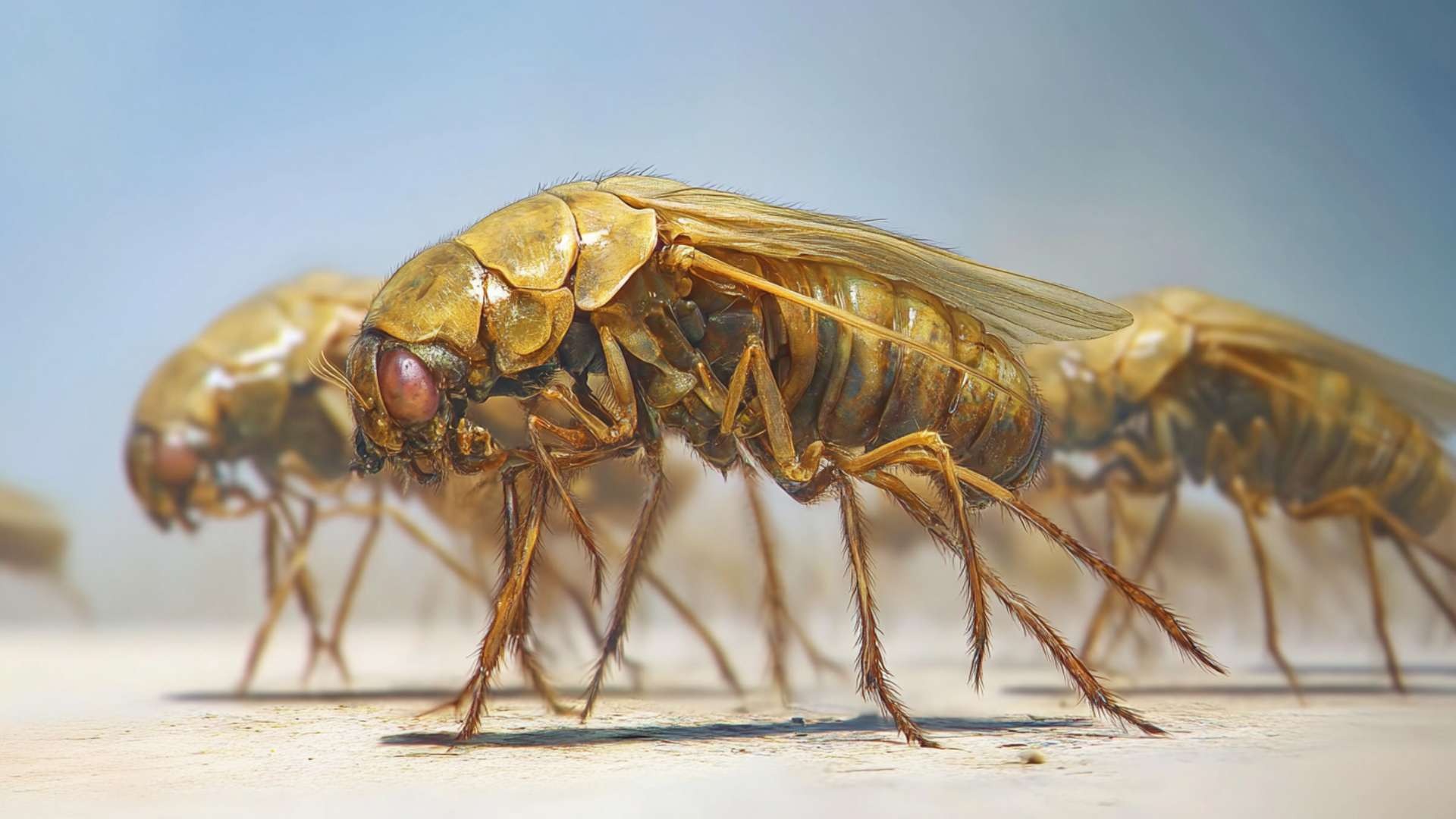
What Are Fleas?
Fleas are darker, tiny, jumping parasites that primarily infest pets but can also bite humans. Their bodies are narrow and their back legs are long, built for jumping. They’re quick and tricky to catch—think specks that move like popcorn. Their strong legs enable them to leap long distances, making them highly mobile compared to bed bugs.Physical Characteristics of Fleas
-
Size: 1/12 to 1/6 inch long, much smaller than bed bugs.
-
Shape: Narrow, wingless body with long, powerful legs.
-
Color: Brownish-black and shiny.
-
Distinguishing Features: Strong legs for jumping, allowing them to move quickly.
 Fleas rely on animals for survival, often hiding in pet fur, bedding, and carpets. Unlike bed bugs, they do not live exclusively indoors and can be brought inside from outdoor environments.
Fleas rely on animals for survival, often hiding in pet fur, bedding, and carpets. Unlike bed bugs, they do not live exclusively indoors and can be brought inside from outdoor environments.
The Bites: What to Watch For
You might not see the bug—but you’ll definitely notice the bite.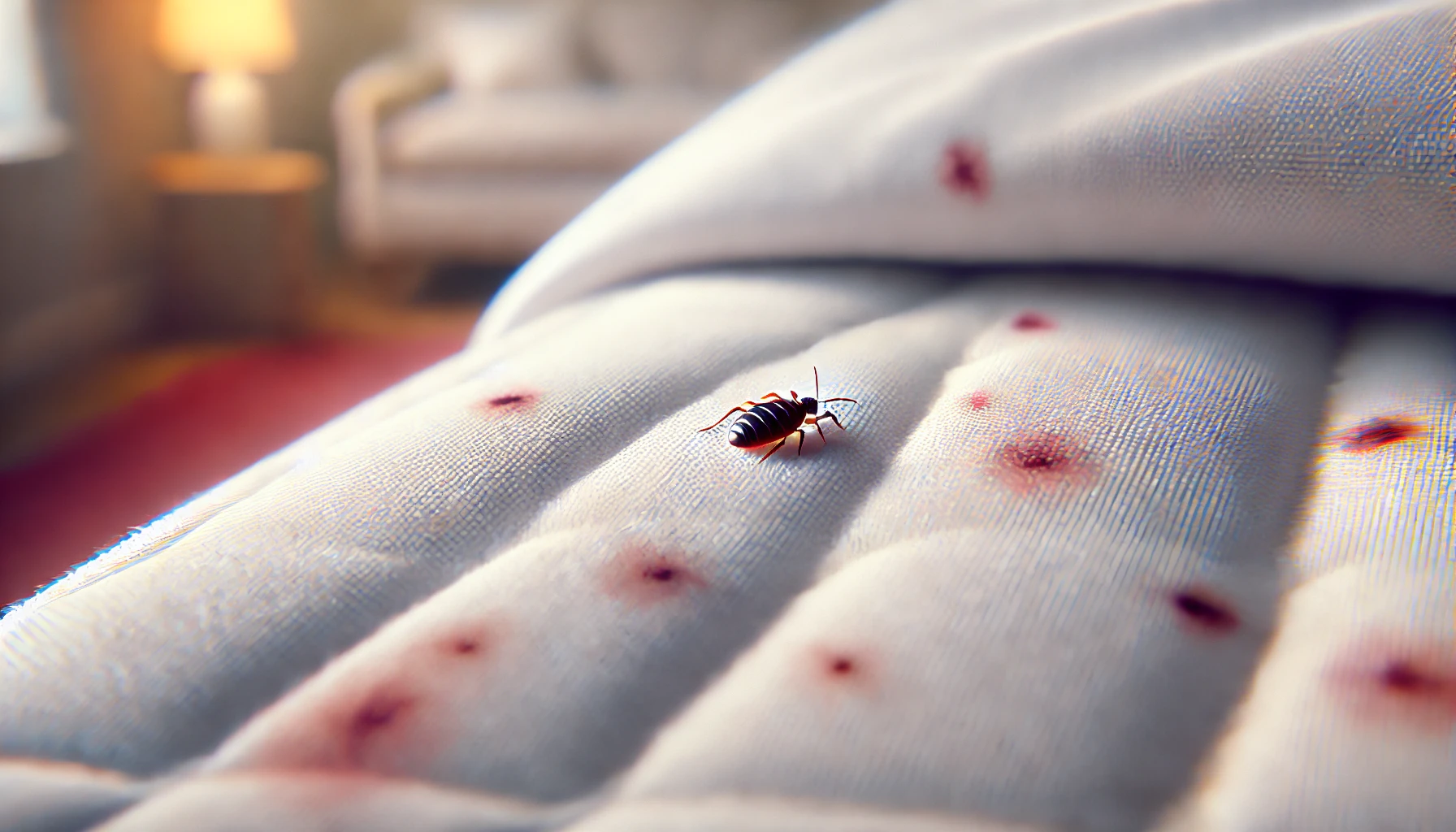
Bed Bug Bites
- Often appear in a line or zigzag
- Common on arms, neck, back, and face—exposed skin
- Itch may take hours or a full day to show
- Look like red welts or flat spots
- Usually occur at night; new red marks in the morning are a strong sign
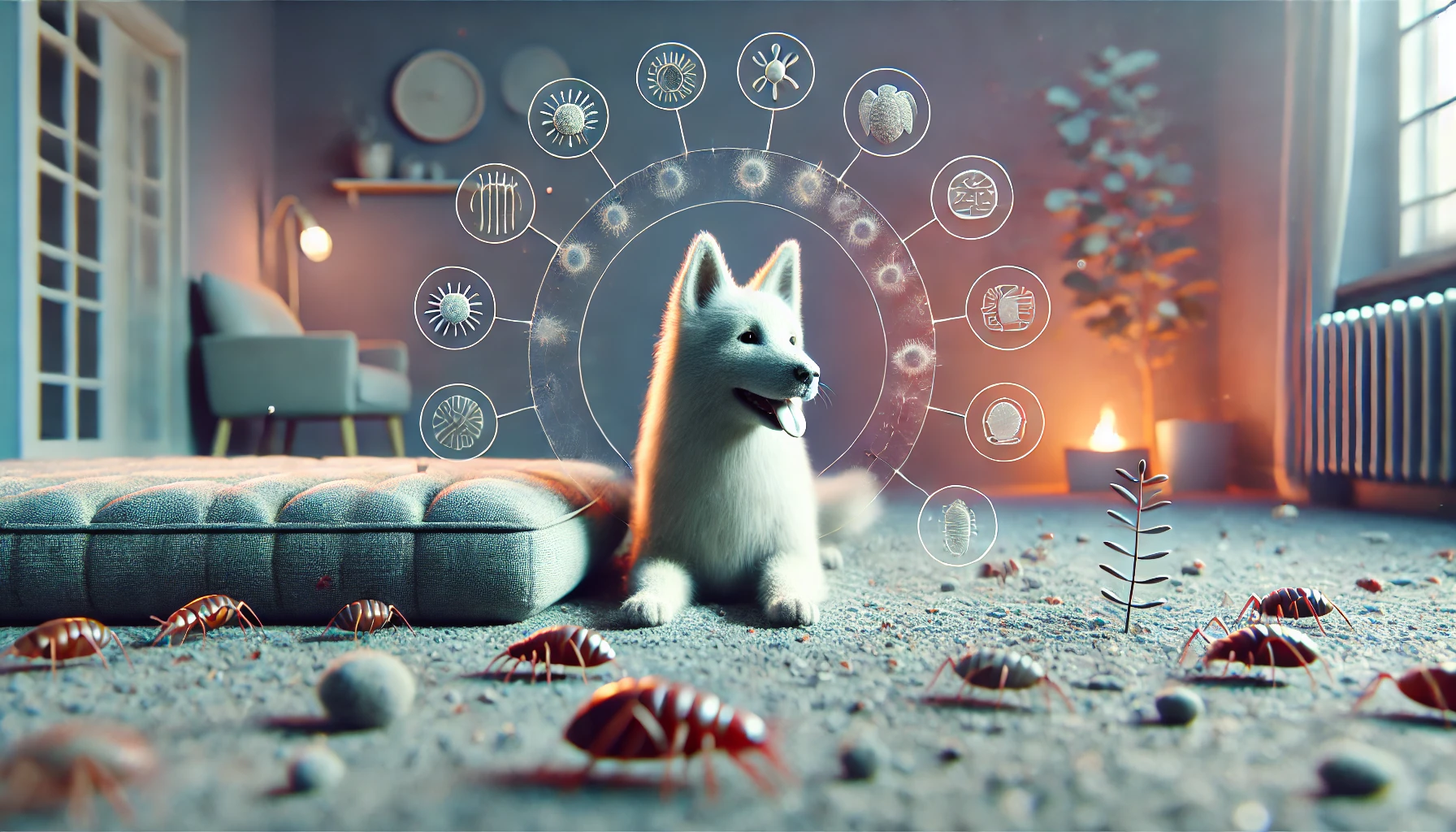
Flea Bites
- Appear in random clusters
- Typically on ankles, legs, or around the waist
- Itch starts almost immediately
- Small, red, often with a darker center
- Fleas bite pets too—if you and your dog are scratching, suspect fleas
Movement: Crawlers vs Jumpers
Bed bugs can’t jump or fly. They crawl—slowly and awkwardly. They’ll never leap onto you. Fleas are the Olympians of the bug world. They jump far and fast—off the carpet, off your dog, and onto you in seconds. Here’s a simple test: Wear white socks around your home. Walk slowly across the carpet. If tiny dark specs start jumping onto the socks? Fleas.Where They Hide
Bed bugs love tight, dark spaces near where you sleep:- Mattress seams
- Box springs
- Bed frames
- Cracks in walls or furniture
- Pet fur (especially around the neck and belly)
- Pet bedding
- Carpets and upholstered furniture
- Shaded areas in your yard
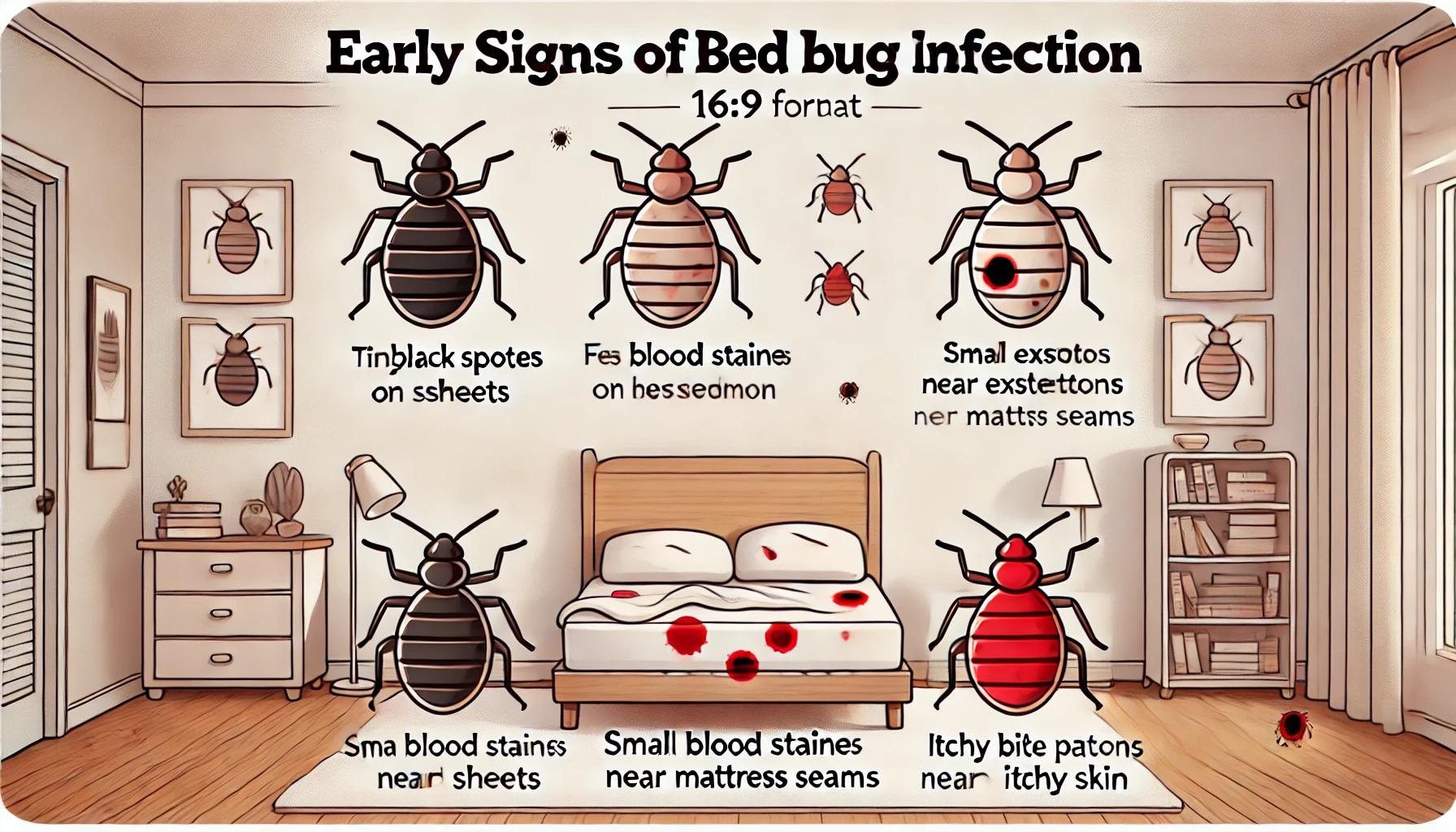
How to Spot Signs of Bed Bug and Flea Infestations in Your Home
Not sure if you’re dealing with bed bugs or fleas? Here are clear signs to help you identify the pest invading your home:Bed Bugs
- Blood spots or black dots (feces) on sheets
- Shedded exoskeletons in mattress seams or furniture
- A strange, musty odor in the bedroom
- Waking up with new bites nearly every morning
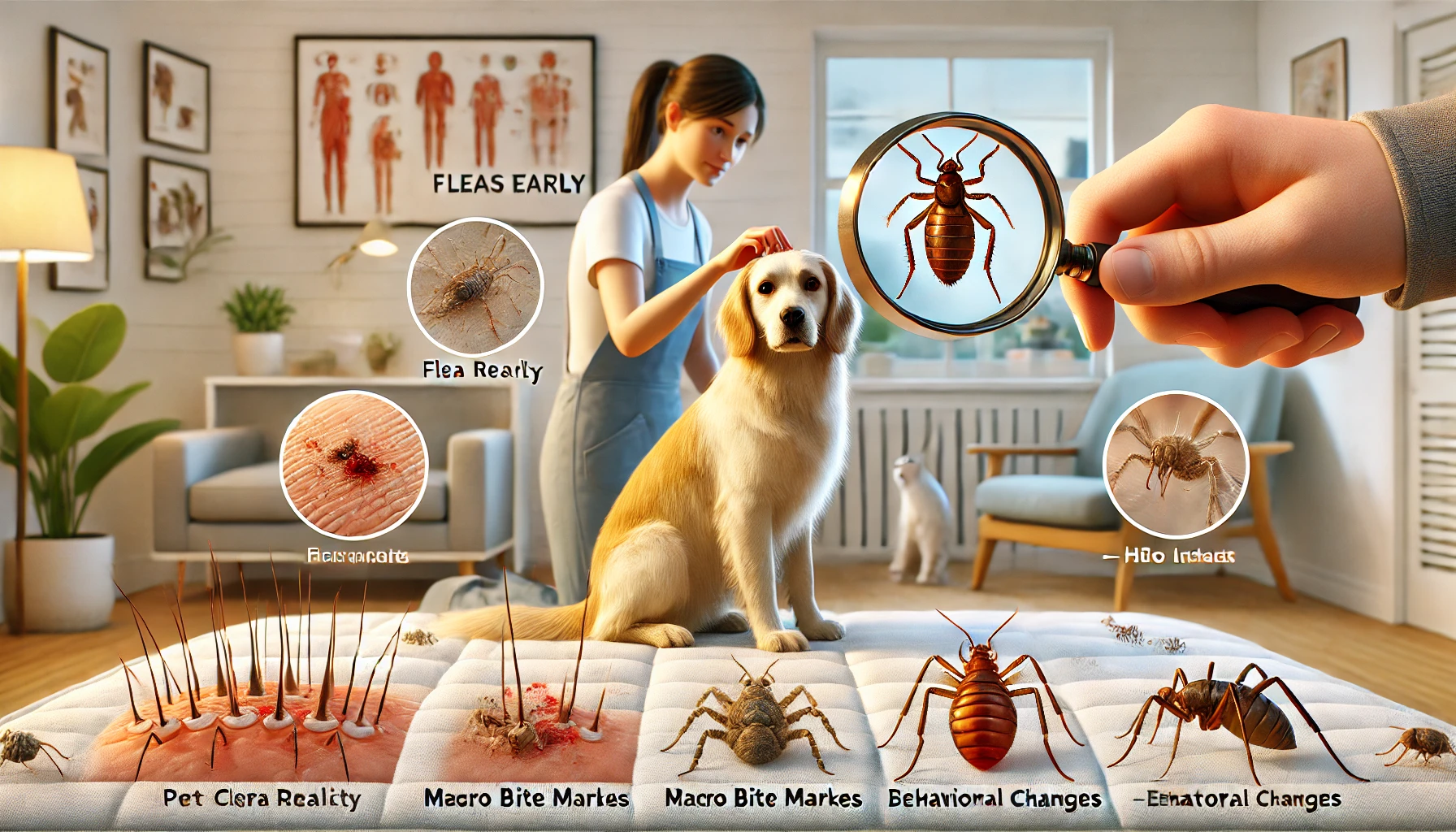
Fleas
- Pets scratching or biting themselves constantly
- Small black specs (flea dirt) visible in pet fur
- Fleas hopping on your socks or legs
- Bite marks appearing in the same places on both you and your pet
Bed Bugs vs Fleas: Key Differences
| Feature | Bed Bugs | Fleas |
|---|---|---|
| Size | 1/4 to 3/8 inch | 1/12 to 1/6 inch |
| Shape | Flat, oval body | Narrow, cylindrical body |
| Color | Reddish-brown | Dark brown to black |
| Movement | Crawls slowly, cannot jump | Jumps long distances |
| Feeding Time | Feeds at night while hosts sleep | Feeds during the day |
| Bite Pattern | Clusters or lines on exposed skin | Small, red bumps in clusters, mostly on ankles and legs |
| Habitat | Beds, furniture, walls | Pets, carpets, pet bedding |
| Health Risks | Skin irritation, anxiety | Disease transmission, severe itching |
Health Risks of Bed Bugs and Fleas
Both pests can cause discomfort, but fleas pose a greater risk of disease transmission.
Health Risks from Bed Bugs
-
Skin Irritation: Bites cause itchy, red welts.
-
Allergic Reactions: Some people develop severe reactions to bed bug bites.
-
Psychological Impact: Infestations can lead to severe stress, anxiety, and sleep disturbances throughout night.

Health Risks from Fleas
-
Disease Transmission: Fleas can spread illnesses such as murine typhus, cat scratch fever, and even plague.
-
Tapeworms: Fleas can carry tapeworm larvae, which can be ingested by pets or humans.
-
Severe Itching: Bites can cause excessive scratching, leading to infections.
How to Prevent Bed Bugs and Fleas?
Effective prevention measures can help reduce the risk of infestations in your home.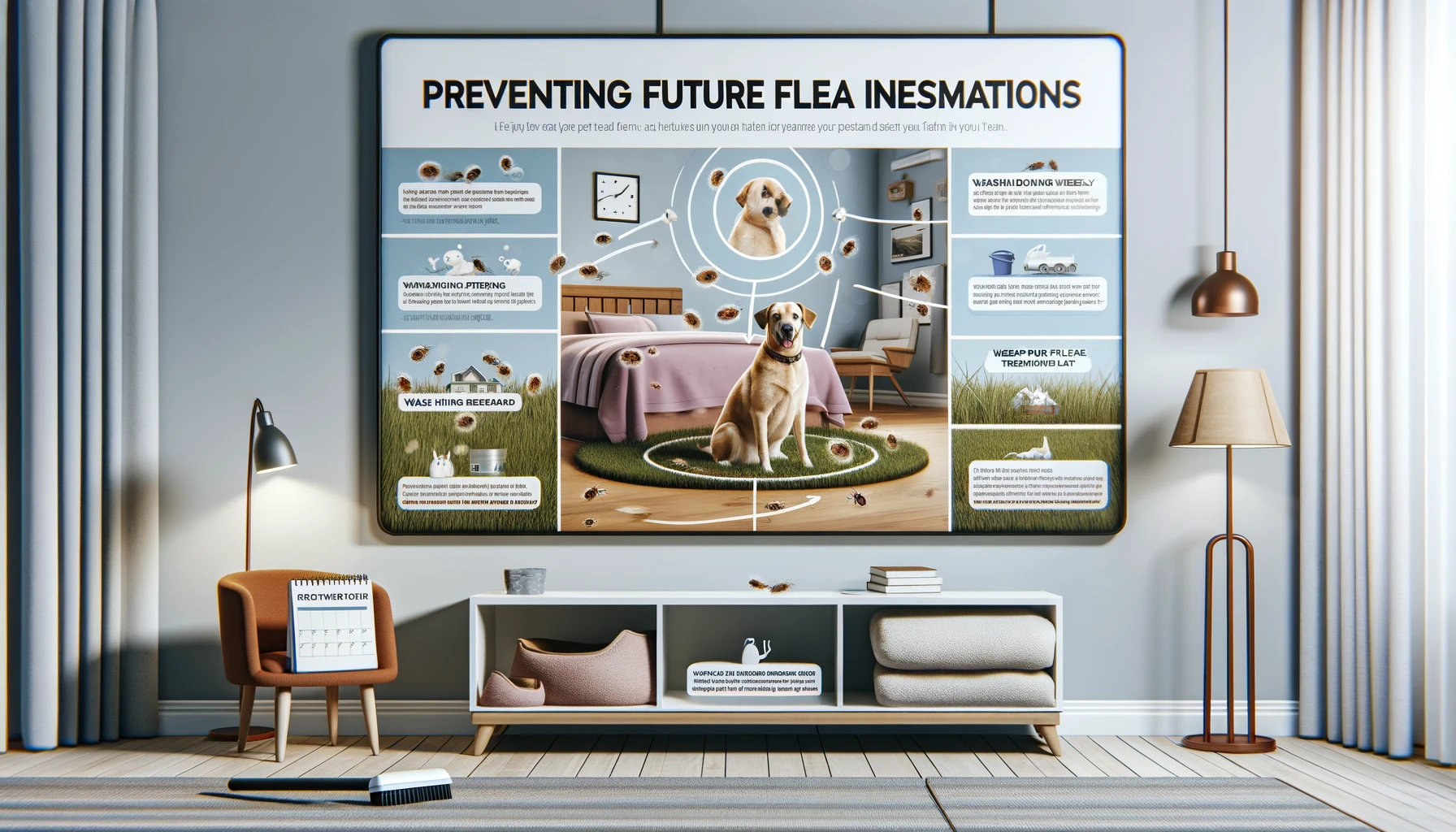
Bed Bug Prevention Tips
-
Inspect Regularly: Check hotel beds, headboards, mattresses, furniture, and wall crevices before settling in.
-
Use Mattress Encasements: Cover mattresses and box springs to limit bed bug hiding spots and make detection easier.
-
Declutter Living Spaces: Minimize clutter to reduce potential hiding areas for bed bugs.
-
Professional Treatment: Call pest control professionals promptly if you detect an infestation.
-
Travel Precautions: Keep luggage off beds and carpets when traveling, and wash clothes on high heat after returning home.
-
Furniture Warning: Avoid used beds and couches unless thoroughly inspected.
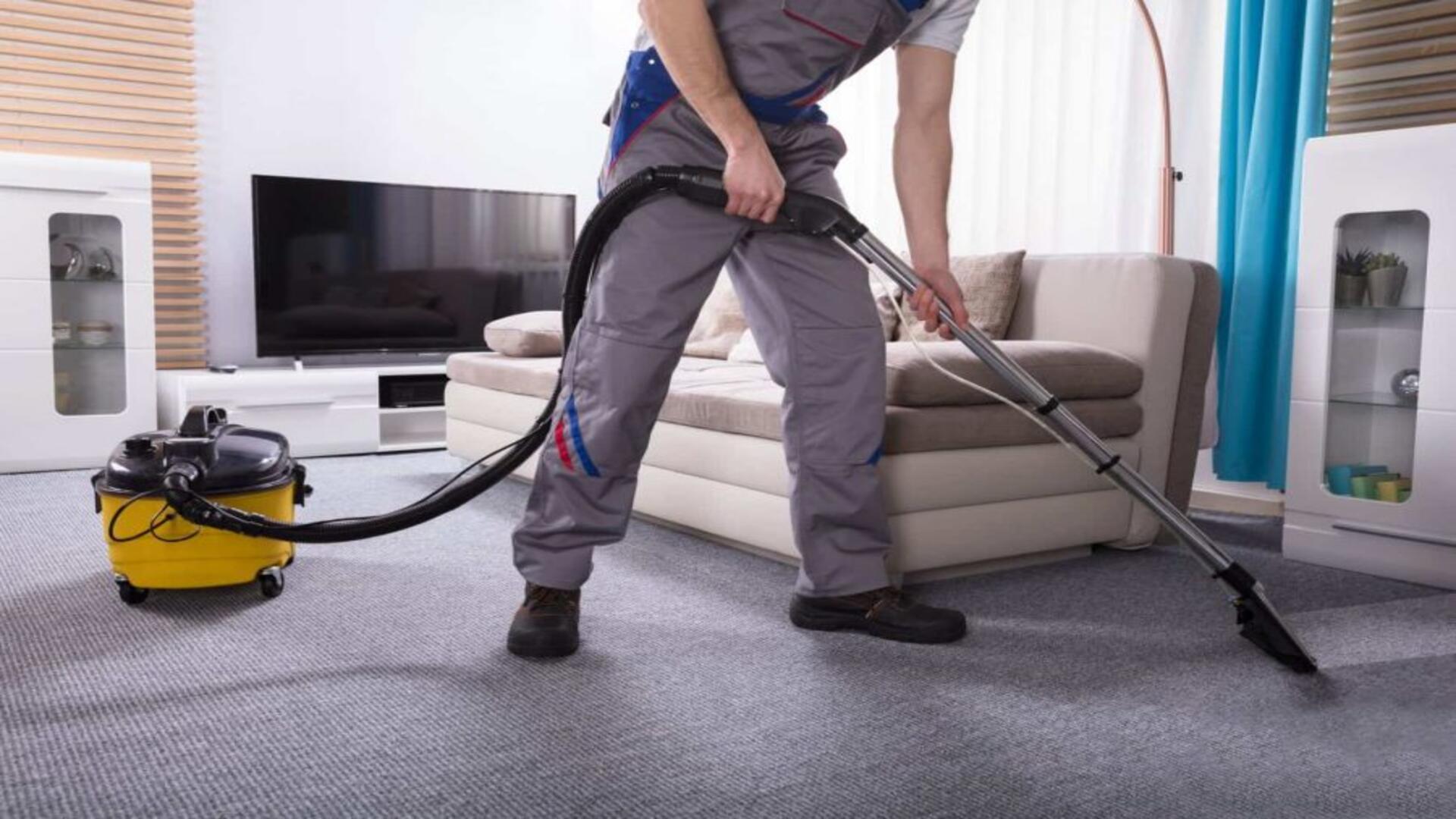
Flea Prevention Tips
-
Pet Care: Use vet-recommended flea preventatives monthly and inspect pets frequently.
-
Vacuum Frequently: Clean floors, carpets, furniture, and pet bedding weekly to remove fleas and eggs.
-
Wash Bedding: Launder pet and human bedding in hot water to eliminate fleas.
-
Treat Outdoor Areas: Apply flea control products to yards, especially areas where pets play or rest.
-
Groom Pets: Regularly brush pets with flea combs to detect and remove fleas early.
Getting Rid of Them: What Works and What Doesn’t
Dealing with bed bugs or fleas can be tricky, but knowing which treatments actually work (and which don’t) makes all the difference. Here’s your quick guide to effective pest control methods.Treating Fleas
- Fleas causing discomfort in your home? Let’s explore practical steps and effective solutions to help you quickly tackle flea infestations, disrupt their life cycle and keep them from coming back.
-
Start with Your Pet: Apply vet-approved oral or topical flea treatments to eliminate the source.
-
Clean Everywhere: Vacuum floors, carpets, and furniture daily; discard vacuum bags outside immediately.
-
Wash Bedding and Fabrics: Use hot water to wash all bedding, clothing, and soft furnishings.
-
Use Home-Safe Flea Spray: Apply flea sprays or powders designed for indoor use to kill remaining fleas.
-
Tackle Your Yard: Focus on shady areas where pets rest, using yard-safe flea control products.
-
Be Persistent: Continue treatments for 3–4 weeks to fully disrupt the flea life cycle.
Treating Bed Bugs
-
Vacuum Thoroughly: Focus on mattress seams, cracks, and crevices to remove bugs and eggs.
-
Use Steam Cleaners: Apply steam at 120°F or higher to kill bed bugs and their eggs.
-
Encase Your Mattress: Seal mattresses and box springs to trap bed bugs inside and prevent escape.
-
Use Targeted Sprays: Choose bed bug-specific sprays—avoid repellents that can scatter bugs.
-
Call a Pest Control Pro: Seek professional help if bed bugs are visible during the day, indicating a severe infestation.
Myths and Facts About Bed Bugs and Fleas
| Myth | Fact |
|---|---|
| Bed bugs invade dirty homes only. | Bed bugs can be found in any home, clean or dirty. |
| Fleas only affect pets. | Fleas can also bite humans and infest homes. |
| Bed bugs are only active at night. | Bed bugs are primarily nocturnal but can be active during the day if hungry. |
| Fleas do not live on humans. | Fleas can bite humans but usually live on pets. |
| You can see bed bugs during the day. | Bed bugs are elusive and prefer hiding during the day. |





